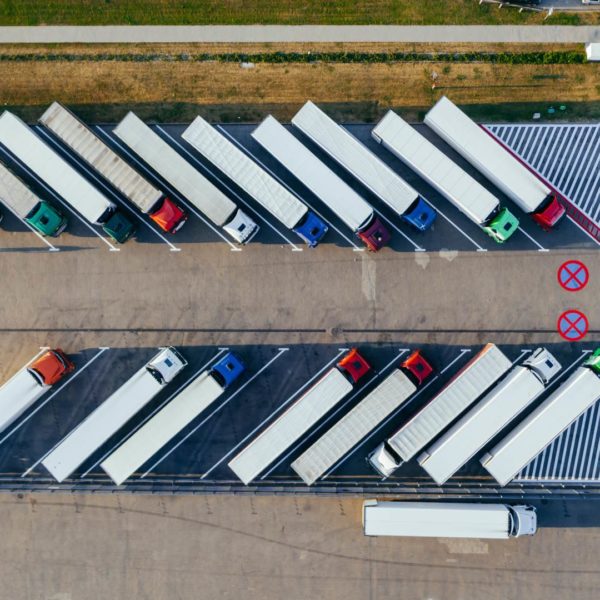We’ve all read the numerous headlines of significant delays in port facilities, as of the time of writing there are still dozens- around 75+ vessels waiting to enter the ports of Los Angeles or Long Beach.
This represents thousands and thousands of containers filled with finished goods sitting in wait for open pier space to unload.
Once the ships are docked, their cargo has to be moved, typically by truck but sometimes via train, out of the port facility itself. While there is an increase in the number of containers that are directly loaded onto trains through a pier access rail facilities, this is still a minority of all cargo, but this percentage will likely rise as the inherent efficiencies of direct ship to rail transload are enormous especially in times of tight drayage capacity. The rest of the freight, 70+%, is moved into container storage areas where drayage trucks then use road chassis to move the containers to local warehouses, further cross-docking facilities, railway intermodal yards or drive them directly to the receiver.
Drayage capacity is simply unable to match the demand of the drayage market, leaving port facilities no choice but to impose stricter time limits and more fees for taking too long to pick up containers and for late empty returns.
Just like with the wider trucking marketplace, drayage is heavily supply and demand based. In the current market, there is more demand than supply which pushes prices up, well over 50% in many cases, and results in drayage carriers being booked for weeks at a time.
2022 Drayage outlook
There’s no reason to believe that drayage rates will drop or capacity will become more plentiful for at least the first half of 2022. A wider economic disruption could quickly reduce consumer demand, but even in the face of higher inflation or slightly reduced consumer demand, supply chains will still be playing catch up for months to rebuild inventory levels.
Supply chains are recommended to plan drayage moves as early as possible and strive to build relationships with multiple drayage carriers in order to control costs and keep freight moving. Also, work with carriers to build efficient relationships including planning delivery times and helping your loading/dock teams to plan ahead and be able to unload containers as efficiently as possible. This will reduce fees imposed by ports and ocean carriers on late container returns and build relationships with your drayage partners, as they do not want to keep drivers sitting.
Potential solutions?
One major solution is to entice more drivers and carriers to operate in drayage service. As we mentioned in our previous article, there is a shortage of truck drivers, and carriers will need to step up recruiting efforts in the coming years. Drayage is often more attractive to drivers as it generally has shorter day trip style routes vs long haul trucking where the driver might be out of town for a number of days or weeks at a time.
Other efforts focus on maximizing the usage of existing drayage drivers and trucks, one strategy in this regard is moving more towards drop trailers, which prevent drivers from having to wait up to 2 hours for the container to be unloaded. Better dock practices and appointment setting through the use of technology can also prevent drivers from wasting time waiting on a dock space to open up.
On dock rail investment is poised at over 1 billion USD in the next few years at the ports of Long Beach and LA, as the advantages are numerous for containers moving further inland and not being consumed domestically in southern California.
This practice can let drayage carriers then focus their capacity on shorter haul freight, and hopefully keep containers moving.
Inland ports also offer a strategy to take pressure off of port-based drayage carriers and move the freight further inland before transferring the containers off rail cars. Inland ports do however require drayage capacity at the inland location to provide final mile service from the inland port to the receiver. Expect to see further investment in inland port facilities in the coming years. Inland port and on dock rail facilities also help to reduce carbon emissions within supply chains and prevent the overcrowding of highway systems with freight that could move more cost-effectively via rail.
Increase in Crossdocking and 53ft transloading
Another strategy that has become more popular is transloading freight from 40ft international containers to domestic 53ft containers at facilities close to the port. This allows the international 40ft containers to be returned to the port quicker, and reduce inland freight spent as 5 40ft containers worth of freight will fit in 3 53ft dry vans or domestic intermodal containers.
This also gives shippers the ability to mix and match freight between the containers before the freight is moved further inland, often creating additional efficiencies within the supply chain.
While there is a cost and labor component associated with doing this type of transloading, as long as shipping volume is high enough, the efficiencies and overall cost reductions more than make up for the transloading charges.
Drayage Demand Based on Location
Drayage demand can also fluctuate based on the port. For example, drayage out of southern California ports is in extreme demand, however, ports like Mobile, or New Orleans have less current capacity deficit. Savannah GA is also experiencing large delays in available drayage capacity.
For many supply chains and retailers, 2022 will be a year focused on supply resiliency, with increased emphasis on being able to maintain inventory flow in spite of disruptions and drayage provides a critical link in overall operations. It’s imperative that supply chain managers strongly consider their drayage procurement strategy in their overall supply chain planning to maintain network fluidity and keep inventory moving.



